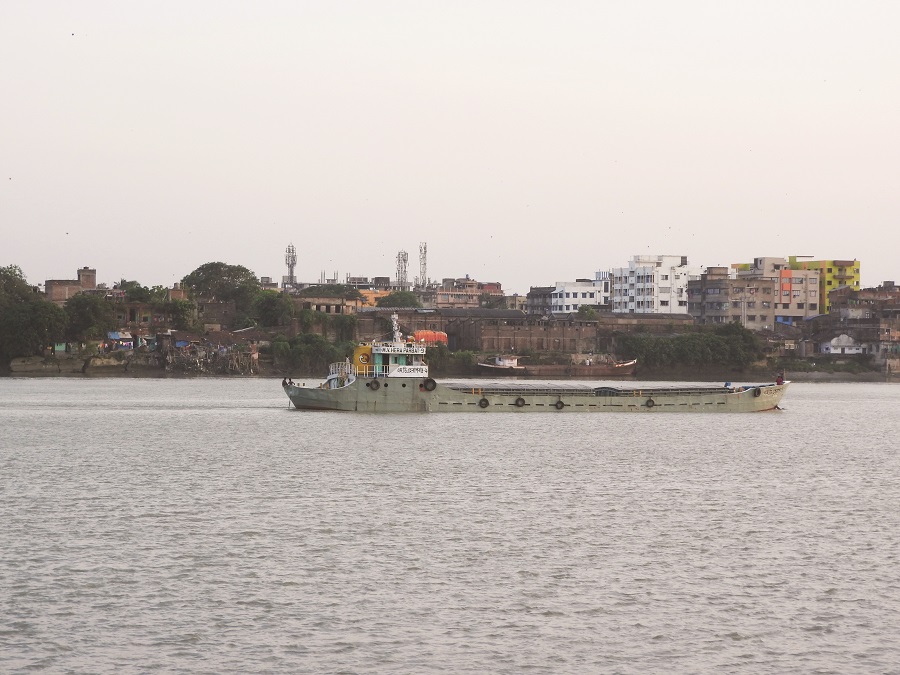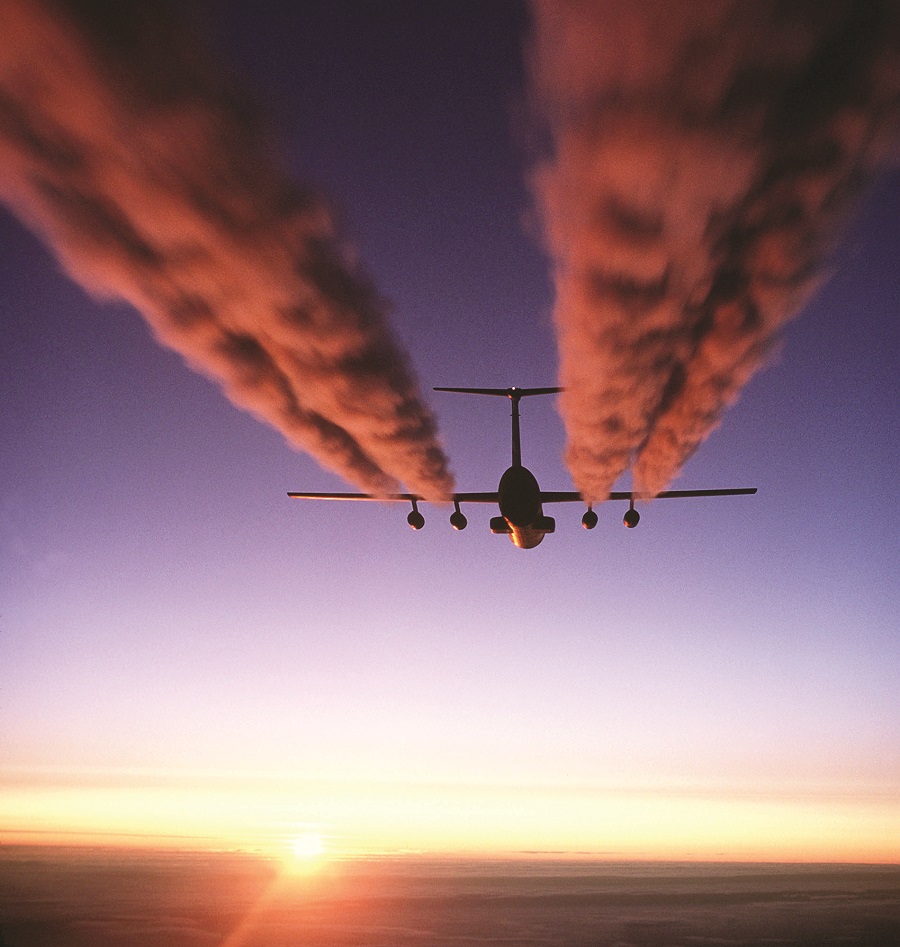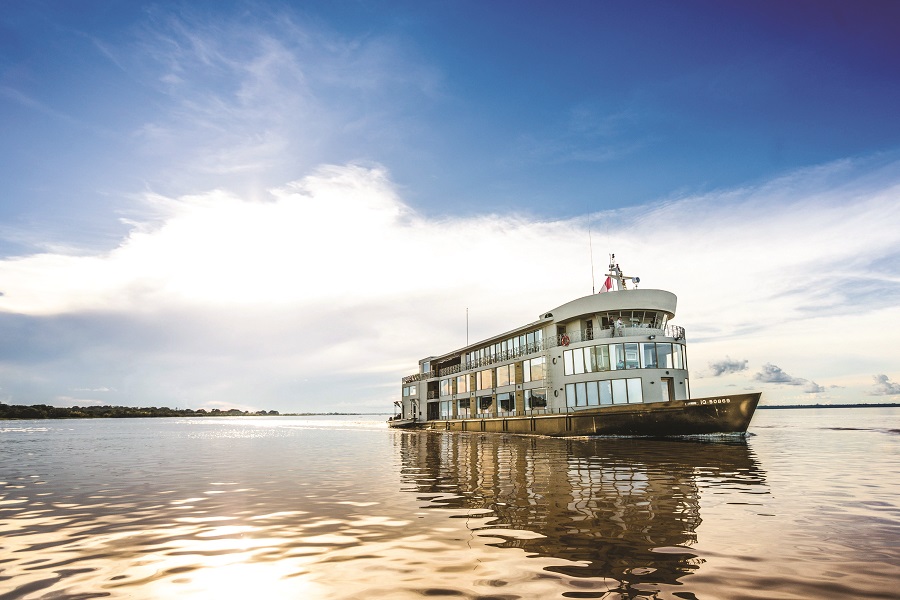As humanity grapples with environmental concerns, it’s imperative to recognize our interconnectedness with nature. Water transport emerges as a sustainable solution, reducing the impact of our actions on the environment. Not only is it recognized for its cost-effectiveness due to fuel efficiency, but it also boasts of a minimal environmental impact
By Dr Mohan Kanda
- Through ages, rivers have served as effective waterways for long distances. Even today, many countries depend heavily on inland water transport
- Located on the Krishna River, the Penumudi – Puligadda bridge, also known as the Campbell Aqueduct, attracts tourists from all over the country
- The Suez Canal is a significant route for energy, commodities, consumer goods and componentry from Asia and the Middle East to Europe
- China has more than 125,000 km of navigable inland waterways, including rivers, streams and canals, It is the most extensive system in the world
“Forgiveness is the law of nature, it should never be taken for granted”.
‘YADU’, the legendary King of the ‘Yadu’ dynasty to which belonged Lord Krishna, the Hindu God, is one of the ten ‘Avatars’, or manifestations of Lord Vishnu. Lord Brahma the Creator, Lord Vishnu, the Preserver and Lord Shiva, the Destroyer, together constitute the Triumvirate that governs the Universe, according to the Hindu religion. Just because nature forgives your mistakes, you should never take her for granted, and continue to commit them.
THE GAIA HYPOTHESIS
Expert studies suggest that planet Earth is likely to cross, by the 2030s, what is known as the ‘tipping point’, if it has not already crossed it. The tipping point is a critical threshold, which, when crossed, will inevitably lead to a large, and irreversible, change in the climate system, and, once crossed, is likely to have a severe impact on the human species.
While there is some uncertainty in the calculations, recent results suggest that life on Earth only has around 10.5 billion years before the end. Planet Earth is the only body, so far known in the Universe, that supports life. Everything in its system can be placed into one of the four major subsystems, namely, land, water, living beings, and air, known, respectively, as the lithosphere, the hydrosphere, the biosphere (living), and the atmosphere. The celebrated English scientist, and environmentalist, James Lovelock, proposed, in 1972, the ‘Gaia Hypothesis’, The name ‘Gaia’ derives its origin from that of the Greek Goddess of Earth, and suggests that living organisms on the planet interact with the surrounding environment, to form a synergetic, and self – regulating, system, which, originally created, and now maintains, the climate and biochemical conditions, that make life on earth possible.
The environment is a complicated web of ecosystems which are interdependent. While depending on the environment for survival and well-being, human beings continue to indulge in actions that impact it harmfully. From pollution, and deforestation, to climate change and habitat construction, the environmental impact of human activity is widespread and significant.
THE IMPORTANCE OF SUSTAINABLE MANAGEMENT
Sustainable and sensible management, of the land, water and air resources, is critical for the survival of life in the biosphere. The land resource is being subjected to continuous degradation, through activities such as agriculture (involving the use of chemical pesticides and fertilisers harmful to the soil), industrial and domestic (which consume huge quantities of water, often contaminating it), and transport, among others. All these result in the emission of Chlorohydrocarbons (CHC)s, into the atmosphere. The land resource is, in addition, subjected to erosion by rivers and seas.
Human beings belong to the species of the Homo Sapiens, which heads the list of species, capable of harming the very environment that sustains them. They are like lemmings, and herds of animals which possess a rare trait of entering, en masse, into dangerous situations, unable even to see the cliff they are about to plummet over.
Among human activities that have the most adverse impact on the environment are those which use fossil fuels such as agriculture, industry, transport, construction, activity, and the food retail network.
FOSSIL FUELS AND TRANSPORTATION IMPACT

The environmental effects of transport are significant, because transport is a major user of energy, and burns most of the world’s petroleum, creating air pollution by emitting carbon dioxide and particulates. It is a significant contributor to global warming. Transportation is considered one of the primary sources of toxic air pollutants. The aviation industry has become one of the fastest-growing polluters of the environment, with estimates putting around 2.5% of global emissions coming from it. Air transport is very energy intensive even though it represents only a small proportion of the transport sector. Freight transport by water and rail is much less energy-consuming than by road and air.
The Government of India is now reviving the Ganga watercourse – known as National Waterway 1 or NW1- to ferry cargo from the eastern seaport of Haldia to Varanasi, some 1,360 km inland. The waterway has the potential to emerge as the leading logistics artery for northern India
In this article, an effort has been made to commend the desirability of using the medium of water to minimise pollution caused by transport activity.
SIGNIFICANCE OF INLAND WATERWAYS
Water transport, a favoured means of transport the world over, is a highly environmentally friendly mode of transportation, apart from being, the cheapest, on account of its fuel efficiency. As larger distances can be covered per unit of fuel, it is also a suitable mode for transporting heavy and bulky goods. Inland barge transport or Inland waterway transport (IWT) is a transport system allowing ships and barges to use inland waterways (such as canals, rivers and lakes). SS Yechury, my brother-in-law and the father of Sitaram Yechury, the Communist leader, was the Chairman of the Inland Water Transport Authority, in the early 1980s. It was in my interactions with him that I first began to appreciate the importance of IWT. Inland Water Transport (IWT) is the most economical mode of transportation, especially for bulk cargo like coal, iron ore, cement, food grains and fertiliser. Presently, it remains underutilised at a share of 2% in India’s modal mix. The government intends to increase the share of IWT to 5% as per Maritime India Vision (MIV)-2030.
India has yet to exploit, to the fullest extent, the advantages offered by IWT goods still travel by congested road and rail networks, slowing the movement of cargo, adding to uncertainties, and increasing the costs of trade. So much so that logistics costs in India are estimated to account for as much as 18 percent of the country’s GDP. The National Waterways Act, 2016 declared 111 Inland Waterways as ‘National Waterways’ (NW) in the country to promote shipping and navigation.
Policymakers, in many countries, have been aiming to shift the bulk of the volume of cargo to IWT, in order to reduce the overall environmental impact of transport. In this process, various challenges need to be tackled, including making inland navigation itself less pollutive than it has been and making inland waterways more for the future.
The environmental effects of transport are significant, because transport is a major user of energy, and burns most of the world’s petroleum, creating air pollution by emitting carbon dioxide and particulates. It is a significant contributor to global warming
Through the ages, rivers have served as effective waterways, carrying people and goods over long distances. Even today, many countries depend heavily on inland water transport. China has more than 125,000 km of navigable Inland waterways, including rivers, streams, lakes, and canals, which is the most extensive system of any country in the world. Its potential, however, remains largely unexploited.
Improvements in air, rail, and highway facilities beginning in the 20th century, however, greatly reduced dependency on the waterway.
MAJOR WATERWAY NETWORKS
There are six major navigable systems of inland waterways in the world, the rivers of Western and Central Europe, the Volga-Don system, the North American rivers, the Amazon system, the Parana-Paraguay system, and the Chinese waterways.

The Great Lakes in North America, the River Nile in Africa, and the Ganga-Brahmaputra river system are some of the other important inland waterways. Similarly, the Suez Canal is a significant route for energy, commodities, consumer goods and componentry from Asia and the Middle East to Europe. The canal’s location also makes it a key regional hub for shipping oil and other hydrocarbons.
A similar purpose is served by the Isthmus of Panama, which was constructed in 1914, to help ships avoid the lengthy and hazardous route via the Cape Horn route. The canal shortcut enabled vessels to travel between the Atlantic and Pacific oceans in half the time previously required. It substantially shortened the journey, from the mouth of the Chagres River in Central Panama to California, the destination of gold seekers.
Likewise, the Buckingham Canal a freshwater navigation canal, that parallels the Coromandel Coast of South India from Kakinada town in the erstwhile East Godavari district of Andhra Pradesh state to Villupuram village, near Chidambaram, in Cuddalore district of Tamil Nadu state, in India. The canal connects most of the natural backwaters along the coast to the Chennai port. The Nile River is also a vital waterway for transport, especially at times when motor transport is not feasible – e.g., during the flood season.
REVIVAL OF GANGA WATERCOURSE
Until about a hundred years ago, the Ganga River, too, was a busy waterway. But with the coming of the railways, this watercourse fell into disuse. The Government of India is now reviving the Ganga watercourse, known as National Waterway-1 (NW-1) to ferry cargo from the eastern seaport of Haldia to Varanasi, some 1,360 km inland. The waterway has the potential to emerge as the leading logistics artery for northern India. The Ganga – Bhagirathi – Hooghly river system between Haldia (Sagar) and Allahabad (1620 km) was declared a National Waterway-1 in 1986.

Since the river Ganga occupies a special place in the social, cultural and environmental landscape of the country, the Inland Waterways Authority of India (IWAI) has sought to adopt the least intrusive methods of making the river navigable. It has therefore followed the principle of ‘working with nature’ while planning the Ganga waterway.
ARTIFICIAL CHANNELS FOR CONVEYING WATER
An ‘aqueduct’ is an artificial channel for conveying water, typically in the form of a bridge across a valley or other gap. Located on the Krishna River, and spanning the river from Penumudi in the Guntur district to Puligadda in the Krishna district of Andhra Pradesh state, the Penumudi – Puligadda bridge, also known as the Campbell Aqueduct, attracts tourists from all over the country, to witness its scenic beauty, especially during the rainy season.
Transportation stands as a significant contributor to the emission of harmful air pollutants. Among these pollutants, the aviation industry has emerged as a rapid and notable environmental polluter, responsible for approximately 2.5% of the world’s total emissions
One of the most popular destinations in the world for tourists is Venice, Italy, famous for its waterways and gondolas. The city receives all needs through the Grand Canal and everything is transported by water, whether it be residents, visitors, or goods. Public transport is handled by passenger ships called Vaporettos.
INSPIRATION FOR BOOKS AND MOVIES
‘Twenty Thousand Leagues Under the Seas’ remains a timeless classic of science fiction adventure literature, crafted by the skilled futurist adventurer Jules Verne. Its cinematic adaptation, considered the most celebrated of its kind, features James Mason, an iconic character actor from the golden age of Hollywood, portraying Captain Nemo—the enigmatic commander of the submarine ‘Nautilus’. This gripping film captivated me to an unprecedented extent, compelling me to witness it thrice in a single day during my time in Vijayawada.
The journey of the submarine through the world‘s seas, showing the spectators amazing deep-sea creatures and the wonders of the remotest islands really cast a spell over me. Likewise, the story of the book ‘Three Men in a Boat’ (To Say Nothing of the Dog), revolves around the adventure of three men, on a vacation up the river Thames, by way of a break from their otherwise monotonous life. They are accompanied by a lively canine companion, Montmorency, who sees himself as intelligent, hard-working and competent. The book is a great read, with humour playing a major part.
LESSONS FROM WATER SPORTS
Water sports and games are also a favourite pastime all over the world. For example, the Boat Race is an annual set of rowing races between the Cambridge University Boat Club and the Oxford University Boat Club, traditionally rowed between open-weight eights on the River Thames in London, England. It is also known as the University Boat Race and the Oxford and Cambridge Boat Race. Likewise, boat races are among the grandest traditions still alive and thriving in Kerala. People go to these events in large numbers to watch these snake-shaped beauties go head to head in rhythm to the old boat songs sung in full volume. These snake boats or ‘chundan vallam’ are up to 100 feet long and bring the serene backwaters to life. The annual sailing competition, held in the Hussain Sagar Lake, in Hyderabad city, is a great draw and marked by enthusiastic participation by the competitors.
Water polo is a competitive inter sport, played between two teams of seven players each. The history of water polo as a team sport began as a demonstration of strength and swimming skills in mid-19th century England and Scotland, where water sports and racing exhibitions were a feature of county fairs and festivals. Synchronised swimming (in British English, synchronised swimming) or artistic swimming is a sport where swimmers perform a synchronised choreographed routine, accompanied by music. Another water sport that is popular around the world is sailing.
CONCLUSION
The high seas have, since long ago, proved a favourite route for the armies of powerful nations seeking to expand their empires and feed their imperialistic ambitions. In the case of Britain, for example, the Royal Navy played a key part in establishing, and defending, the British Empire, with the Chief of the Naval Staff being known as the First Sea Lord. In the mid-16th century, England was a minor player on the world stage. The Spanish and the Portuguese, ahead in the race for the spoils of Asia and South America, dominated international trade and controlled the world’s oceans. They were the European superpowers. England could only watch enviously as ships laden with gold, silver and spices sailed into Lisbon and Cádiz, fattening the treasuries of their enemies. The situation changed quickly. By the end of the century, England defeated Spain. Its growing navy, almost mystically identified with the national character and destiny, defeated the Dutch and the French, on the road to creating a global empire.
There are six major navigable systems of inland waterways in the world, the rivers of Western and Central Europe, the Volga-Don system, the North American rivers, the Amazon system, the Parana-Paraguay system, and the Chinese waterways. The Great Lakes in North America, the River Nile in Africa, and the Ganga-Brahmaputra river system are some of the other important inland waterways
In modern times, however, countries often conduct naval exercises to improve their tactical and interoperable capabilities. I remember having participated in one such more than four decades ago when the Western Naval Command conducted exercises on the high seas. The most thrilling experience I recollect from that experience is transiting from one moving ship to another in what is called a Jackstay.

The subject of for long, water transport has also captured the imagination of composers of children’s rhymes for a long time. Nursery rhymes, sung to tunes set to make them melodious, boost the creativity of children and push the limits of their imagination. In the context of the subject being discussed in this article, one recalls the rhyme which goes
‘Row, row, row, your boat
Gently down the stream,
Merrily, merrily, merrily,merrily
Life is but a dream.’
The rhyme conveys a deeper meaning, to children at a tender age, about the determination that goes into rowing a boat, the gentleness of the stream and the merriment of the experience as a whole. It celebrates life, what the French call la joie de vivre or the sheer joy of being alive. It encourages children to keep going with whatever is on hand, stay focused and have a positive outlook, while keeping things in perspective.
